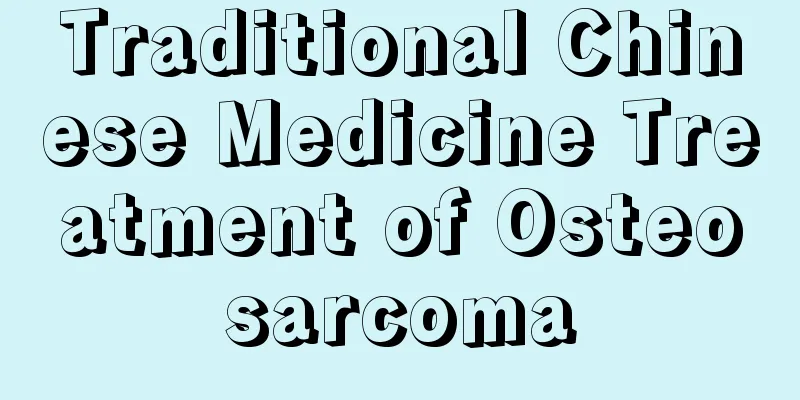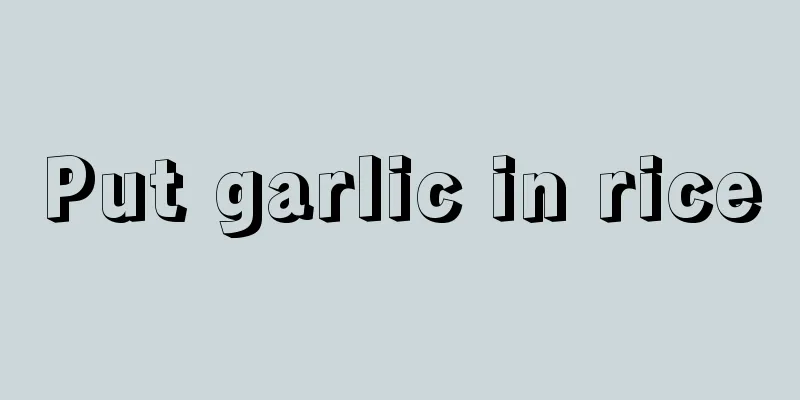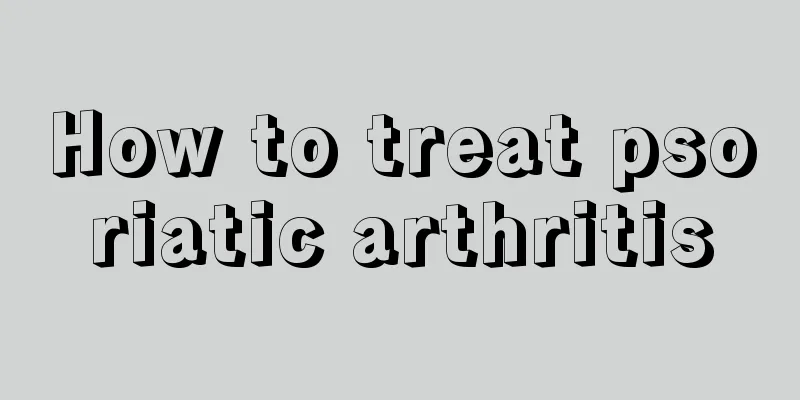Traditional Chinese medicine for clearing away heat and detoxifying skin diseases

|
What are the traditional Chinese medicines for clearing away heat and detoxifying for skin diseases? Skin diseases cause certain damage to people's body and mind, affect the beauty of the skin, and bring psychological pressure to patients. Some skin diseases can be cured, while others are difficult to cure. There are also skin diseases that may recur. People with skin diseases should actively cooperate with doctors for treatment. Skin diseases can be treated with traditional Chinese medicine. What are the traditional Chinese medicines for clearing away heat and detoxifying skin diseases? Let’s take a look at it next. 1. Types of heat-clearing and detoxifying drugs There are many medicines and flavors in heat-clearing and detoxifying medicines. For the convenience of learning and memorizing, they can be divided into four categories. They are mainly heat-clearing and detoxifying medicines for treating febrile diseases, swelling and pain of sores and carbuncles, dysentery caused by heat and poison, and swelling and pain of the throat caused by heat and poison. The first category is heat-clearing and detoxifying drugs mainly used to treat febrile diseases. So, this kind of medicine is relatively commonly used in febrile diseases, and many of them can be applied to various stages of febrile diseases, including the Wei Qi Ying Xue stage. But this classification is relative. While it is used to treat febrile diseases, this type of medicine is also an important medicine for treating sores, carbuncles, swelling and pain. It can be used for both internal and external carbuncles, so don't ignore its main treatment in this area. It cannot be considered that it is mainly used for febrile diseases and cannot treat sores and carbuncles. Carbuncle is the most common indication for heat-clearing and detoxifying drugs, and this point must not be forgotten. The second category is heat-clearing and detoxifying drugs that are mainly used for sores, carbuncles, swelling and pain. Since all heat-clearing and detoxifying drugs can treat sores, carbuncles, swelling and pain, why should we separate them into a group that is mainly used for sores, carbuncles, swelling and pain? Because this type of heat-clearing and detoxifying drugs is not commonly used for other heat and toxic diseases, or it is not its main treatment content, especially in traditional applications. Of course, this type of medicine is now being used more and more widely. In addition to treating sores, carbuncles, swelling and pain, for example, some of them can also be used to treat febrile diseases or other heat syndromes. That is to say, relatively speaking, this type of medicine is mainly used to treat sores and carbuncles, so we classify it into this category. In addition, there are heat-clearing and detoxifying drugs that are mainly used to treat heat-toxic dysentery. This type of medicine is mainly used to treat heat-toxic dysentery, and may be relatively less used to treat sores, carbuncles, swelling and pain, and some are rarely used. There are also heat-clearing and detoxifying drugs for treating sore throat caused by heat and toxins. They are similar to those used to treat dysentery and are mainly used for sore throat caused by heat and toxins. Some of them may not be commonly used for sores and carbuncles. We divide them into four groups, and no longer distinguish between burns, insect and snake bites, and cancer, because general heat-clearing and detoxifying medicines can be used for those, and they are mainly a part of them. When symptoms of heat and toxic diseases appear, then we will choose to use them. 2. The 12 most commonly used traditional Chinese medicines for clearing away heat and detoxification 1. Scrophularia Scrophularia is the root of Scrophularia and Scrophularia ningpoensis of the Scrophulariaceae family. It contains scrophulariacein, iridoid glycosides, volatile oils, alkaloids, etc. Pharmacological experiments have shown that Scrophularia water extract, alcohol extract and decoction have the effect of lowering blood pressure. Scrophularia also has the effect of dilating blood vessels and strengthening the heart. Invasive agents from various Scrophularia scraps have sedative and anticonvulsant effects. Traditional Chinese medicine believes that it is cold in nature, sweet and bitter in taste, and has the functions of nourishing yin and reducing fire, cooling blood and detoxifying. It is suitable for symptoms such as fever, thirst, rashes, bone steaming and fatigue fever, restless sleep, spontaneous sweating, night sweats, loss of body fluid and constipation, and sore throat. Dosage: 6-12 grams; but it is not recommended for patients with loose stools and excessive phlegm. 2. Cassia seed Cassia seed is the seed of the leguminous plant Cassia leaf stew or Cassia, which contains anthracene esters and anthraquinone glycosides, cassia bark and vitamin A. Pharmacological experiments have shown that Cassia seed can lower blood pressure and serum cholesterol; it has the effects of resisting multiple pathogens and softening stools. Traditional Chinese medicine believes that it is slightly cold in nature, sweet and bitter in taste, and has the function of clearing the liver and improving eyesight, promoting diuresis and relieving constipation. It is suitable for red and painful eyes, photophobia and excessive tears caused by liver heat or wind-heat in the liver meridian. In addition, it is also effective in treating hypertension, hepatitis, ascites due to cirrhosis and habitual constipation. Dosage: 3-9 grams, crush and decoct. 3. Lycium bark The bark of Lycium barbarum is the root bark of Lycium barbarum, a plant of the Solanaceae family. It contains cinnamic acid, various phenolic substances, betaine and linoleic acid. The bark of Lycium bark has a significant antipyretic effect, and its decoction can lower blood sugar, lower serum cholesterol and resist fatty liver. The infusion of Lycium bark has a significant effect of lowering blood pressure in animals. Traditional Chinese medicine believes that it is cold in nature, sweet and light in taste, and has the functions of cooling blood, relieving steaming, and clearing away lung heat. It is suitable for consumptive hot flashes and night sweats, cough and asthma due to lung heat, vomiting blood, epistaxis, carbuncles and ulcers due to blood heat, as well as tuberculosis and hypertension. Dosage: generally 3-9 grams. 4. Phragmites australis Reed rhizome is the underground stem of the grass plant reed, which contains coixol, asparagine, etc. Traditional Chinese medicine believes that it is cold in nature, sweet in taste, and has the functions of clearing away heat and producing body fluid, relieving restlessness, stopping vomiting and promoting diuresis. It is suitable for treating body fluid loss due to febrile disease, restlessness and thirst, vomiting due to stomach heat, choking, nausea, and the treatment of lung heat cough, lung abscess, etc. Dosage: Generally 9-30 grams for dry ones and 15-40 grams for fresh ones. 5. Forsythia Forsythia suspensa is the fruit of the Oleaceae plant Forsythia suspensa, which contains volatile oil, forsythia phenol, flavonoids, alkaloids, etc. Pharmacological experiments have shown that Forsythia suspensa has a broad-spectrum antibacterial effect, and the forsythia phenol it contains may be the main antibacterial component; Forsythia suspensa also has anti-inflammatory, antiemetic, diuretic and cardiotonic effects; the flavonoids it contains can enhance the density of capillaries, and thus have a hemostatic effect on bleeding caused by capillary rupture and subcutaneous hemorrhage. Traditional Chinese medicine believes that it is slightly cold in nature, bitter in taste, and has the functions of clearing away heat and detoxifying, dispersing nodules and reducing swelling. It is suitable for warm heat, erysipelas, rashes, carbuncles, swelling and allergic purpura, etc. Dosage: Generally 6-9 grams. 6. Peony bark Paeonia suffruticosa root bark is the root bark of the peony plant of the Ranunculaceae family, which contains paeonol, paeonol glycosides, volatile oils and phytosterols. Pharmacological experiments have shown that Paeonia suffruticosa has the effect of lowering blood pressure; it has analgesic, sedative, anti-inflammatory and antipyretic effects; and it has a strong inhibitory effect on a variety of pathogenic bacteria. Traditional Chinese medicine believes that it is cool in nature, bitter and pungent in taste, and has the functions of clearing away heat, cooling blood, harmonizing blood, and clearing blood stasis. It is suitable for symptoms such as heat in the blood, rashes, shock and pain, vomiting blood, carbuncles, and bruises. Dosage: 5-9 grams, but it is not recommended for people with spleen and stomach deficiency and diarrhea. 7. Anemarrhena Anemarrhena asphodeloides is the rhizome of the Liliaceae plant Anemarrhena asphodeloides, which contains a variety of saponins and saponins, in addition to two flavonoids, mangiferin, etc. Experiments have shown that Anemarrhena asphodeloides has a significant antipyretic effect and is effective in treating hemorrhagic fever, epidemic encephalitis B, and hot flashes caused by pulmonary tuberculosis. Traditional Chinese medicine believes that it is cold in nature, sweet and bitter in taste, and has the functions of clearing away heat and purging fire, nourishing yin and moistening dryness. It is suitable for symptoms such as lung heat cough and asthma or yin deficiency cough, irritability and thirst, bone steaming and fatigue fever, difficulty urinating, and dry and hard stools. Dosage: Generally 6-9 grams, but it is not recommended for patients with kidney yang deficiency, weak pulses and loose stools. 8. Isatis root Isatis root is the root of Isatis and Indigofera, plants of the genus Isatis of the Cruciferae family. It contains isatis indigo glycoside, isatisin B, B-sitosterol, etc. Isatis root has significant antiviral effects. It has inhibitory effects on many pathogenic bacteria and has anti-Leptospira effects. In clinical practice, oral administration or intramuscular injection of isatis root decoction has significant therapeutic effects in the treatment of epidemic encephalitis B; it has certain therapeutic effects on both acute and chronic hepatitis, can relieve or eliminate symptoms, and promote improvement of liver function; isatis root has varying degrees of therapeutic effects in the treatment of viral skin diseases such as herpes simplex, herpes zoster, pityriasis rosea, flat warts, etc. Traditional Chinese medicine believes that it is cold in nature, bitter in taste, and has the functions of clearing away heat and detoxifying, cooling blood, and relieving sore throat. It is suitable for influenza encephalitis, type B encephalitis, pneumonia, erysipelas, heat toxic spots, conjunctivitis, herpes, etc. Dosage: ——Generally 5-9 grams; but it is not suitable for people with weak spleen and stomach. 9. Honeysuckle Honeysuckle is the flower bud of the Caprifoliaceae plant Lonicera japonica, which contains chlorogenic acid, inositol, flavonoids, etc. Pharmacological experiments have shown that honeysuckle has anti-inflammatory and antipyretic effects, and has inhibitory effects on influenza virus and a variety of pathogenic bacteria and skin pathogenic fungi, reflecting the heat-clearing and detoxifying effects of honeysuckle. Traditional Chinese medicine believes that it is cold in nature, sweet in taste, and has the function of clearing away heat and detoxifying. It is suitable for fever caused by febrile diseases, bloody diarrhea caused by heat toxins, sores, carbuncles, boils, and other symptoms caused by excessive heat and toxins. Dosage: Generally 6-12 grams; but it is not suitable for patients with cold diarrhea and sores with clear pus without heat and toxicity. 10. Prunella Vulgaris Prunella vulgaris is the flower or whole herb of the Lamiaceae plant Prunella vulgaris, which contains triterpenoid saponins and their aglycone oleanolic acid, volatile oils, vitamins, potassium chloride, etc. Pharmacological studies have shown that the whole herb of Prunella vulgaris has the effect of lowering blood pressure; its decoction has varying degrees of inhibitory effects on certain common skin fungi and also has inhibitory effects on a variety of pathogenic bacteria. Traditional Chinese medicine believes that it is cold in nature, bitter and pungent in taste, and can clear liver fire, relieve depression, and lower blood pressure. It is suitable for red and swollen eyes, eye pain, photophobia, tearing, headache, dizziness, etc. caused by liver fire; it is used for scrofula, goiter, etc. caused by phlegm and fire stagnation. Dosage: Generally about 9 grams. 11. Gardenia Gardenia is the fruit of the Rubiaceae plant Gardenia, which contains a variety of bitter glycosides, mannitol, ursolic acid, etc. Gardenia has a choleretic effect, or increases bile secretion; at the same time, Gardenia has cooling, sedative, analgesic and anticonvulsant effects; it also has antimicrobial effects, and has inhibitory effects on a variety of pathogenic bacteria and a variety of skin pathogenic fungi. Traditional Chinese medicine believes that it is cold in nature and bitter in taste, and has the functions of purging fire and relieving restlessness, clearing heat and removing dampness, cooling blood and detoxifying. It is suitable for symptoms such as febrile disease, restlessness, insomnia, jaundice, red eyes, epistaxis, hot and toxic sores, etc. Dosage: 3-9 grams. 12. Dandelion Dandelion is the whole herb with roots of the dandelion plant of the Asteraceae family. It contains taraxasterol, cholecalciferol, inulin and fruit acid. Its decoction has anti-pathogenic microbial effects, as well as the effects of protecting the liver, promoting bile secretion and improving human immune function. Traditional Chinese medicine believes that it is cold in nature, sweet and bitter in taste, and has the functions of clearing away heat and detoxifying, reducing swelling and dispersing nodules. It is suitable for acute mastitis, lymphadenitis, shoulder adenitis, gastritis, hepatitis, cholecystitis, urinary tract infection, etc. Dosage: 9-15 grams, mash and apply externally, can be used for breast abscess, rash, carbuncle, etc. 3. Suggestions As the quality of our daily life continues to improve, many people inevitably eat more and eat more, and they are out all day for various social activities. It is easy to get angry without the nourishment of soup, especially in summer, when the high temperature is often unbearable. At this time, it is recommended that you drink more summer heat-clearing and detoxifying soups. Drinking these heat-clearing and detoxifying soups regularly can help you drive away the heat and prevent heatstroke! |
<<: Is laser acne removal effective?
>>: A good way to get rid of acne: white vinegar
Recommend
Are there any traditional Chinese medicines for the treatment of colorectal cancer metastasis to bone cancer?
Bone cancer is a malignant tumor that occurs in b...
Dietary principles for preventing colorectal cancer
Although the cause of colorectal cancer has not y...
Is blood in the stool a sign of colon cancer?
Is blood in the stool a sign of colon cancer? Blo...
Endometrial cancer screening ultrasound
Endometrial cancer may be unfamiliar to many wome...
What can I use to wash away oil stains on clothes?
People have to wash clothes every morning, but th...
What is the method to remove the red mark on the neck
Many couples in love will leave kisses on each ot...
What kind of plants are good to put in a pregnant woman’s room?
Once a woman becomes pregnant, she will become an...
What acupoints should be moxibustioned for kidney yin deficiency
People with symptoms of kidney yang deficiency sh...
What to wear when the temperature is between 11 and 21 degrees
In autumn and spring, although the weather and te...
What are the basic symptoms of lung cancer? You should know these basic symptoms of lung cancer
There are many angles to treat lung cancer, but i...
Analysis of epidemiological characteristics of rectal cancer
Rectal cancer is one of the most common digestive...
What diseases may cause stomach pain
Abdominal pain is very common in daily life, and ...
Patients need timely treatment of early symptoms of colorectal cancer
Since many people do not pay attention to their d...
What medicine should I take for heat accumulation in the spleen and stomach
A bad spleen and stomach will cause symptoms such...
How to do a coffee enema better
Coffee enema is a detoxification therapy that can...









